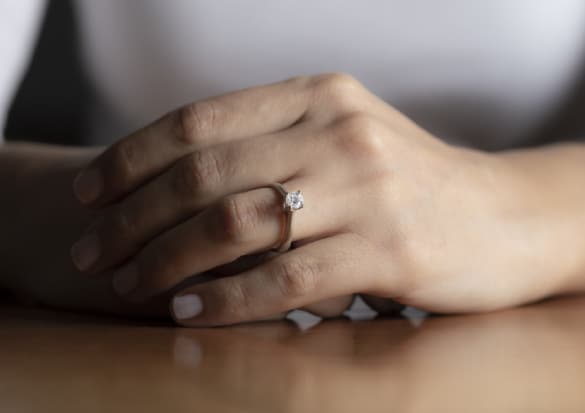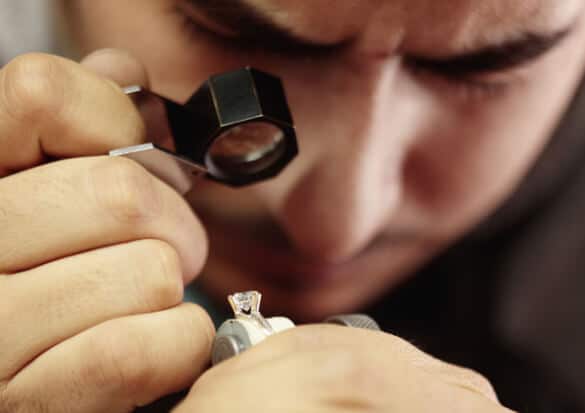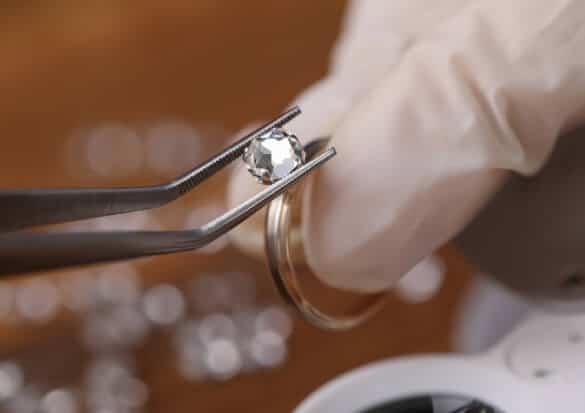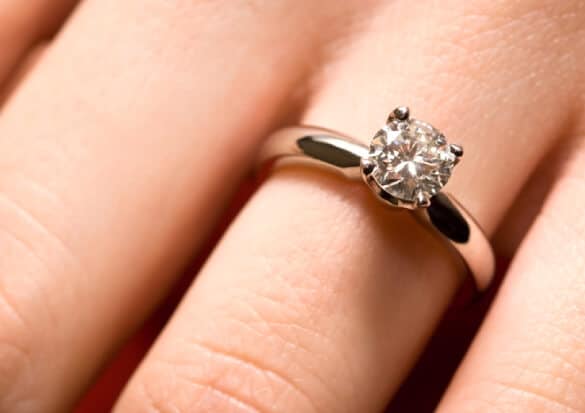Diamond Clarity 101: Understanding Diamond Inclusions
Posted on
If you have been scouring for the perfect diamond, you’ll quickly realise that its quality and price are determined by a few factors, namely the 4Cs – short for Cut, Clarity, Colour and Carat Weight.
Diamond clarity is a qualitative metric that grades the visual appearance of a diamond. With a scale that goes from Flawless (F) down to Included (I), the diamond will be graded based on the inclusions and blemishes it has. The fewer the imperfections, the better the clarity grade.

What Are Diamond Inclusions
Diamond inclusions, otherwise known as diamond imperfections, are characteristics that appear during the different stages of a diamond’s growth. Formed in the Earth’s mantle layer, mined diamonds face extreme heat and pressure during their growth. This heat and pressure will inevitably create internal inclusions and surface blemishes in most diamonds, with only the rarest of diamonds emerging in perfect condition.
Since lab grown diamonds grow in an environment that replicates this geological setting, these diamonds will possess a number of internal inclusions as well! So it’s best not to assume that they are flawless just because they are formed in a controlled environment.
Diamond Clarity Grading
To give you a better insight into how each diamond is graded, use the information below to determine which clarity grade is right for you.
Flawless (FL): There are no inclusions visible under 10x magnification.
Internally Flawless (IF): There are no inclusions or blemishes visible to a skilled grader even under 10x magnification.
Very, Very Slightly Included (VVS1 and VVS2): These inclusions are so minute, it’ll be difficult to spot even under 10x magnification.
Very Slightly Included (VS1 and VS2): Minor inclusions are barely visible under 10x magnification.
Small Inclusions (SI1 and SI2): Inclusions can be observed under the standard 10x magnification, but are almost always clean to the naked eye.
Included (I1, I2, and I3): Inclusions are readily observable under 10x magnification, and they may affect brilliance and transparency.

Types Of Inclusions
Whilst most diamonds do possess imperfections, these inclusions should not be treated equally. Diamond inclusions are classified into three categories: pinpoint inclusions, feather inclusions and diamond cavities.
- Pinpoint Inclusions
As the most common type of diamond inclusions, pinpoint inclusions appear as small crystal dots that are typically invisible to the naked eye, unless viewed under 10x magnification. These inclusions are typically white in colour, but they also come in black and grey. So long as they don’t compromise the diamond’s appearance and quality, their presence are not a concern.
- Feather Inclusions
Feather inclusions are internal inclusions caused by a physical break, crack or fracture of the gem, giving it a white feather-like appearance. Despite being the second most common inclusion, you’ll want to exercise a degree of caution. Depending on these inclusions’ size and location, it will severely affect the diamond’s appearance and quality. If the crack is completely enclosed by the diamond, these ‘feathers’ won’t grow in size and, in turn, deteriorate the gem’s overall durability. However, if the cracks are located on the top or inside the diamond, they may wiggle up to the surface. As they do so, they will grow and expand, effectively hurting the durability of the diamond.
- Diamond Cavities
Last but not least, we have diamond cavities – inclusions that you’ll want to avoid at all costs. A cavity refers to a small hole in the diamond, and it typically forms when a feather inclusion breaks during the process, leaving a deep opening at the gem’s surface.

Relationship Between Inclusion And Price
A diamond’s price point is pegged to its quality and overall 4Cs diamond grading. Naturally, the higher the clarity of a diamond, the higher its price point. Thus, it is important to understand these characteristics when purchasing a diamond, to ensure that you get what you paid for. Whether it’s a well-earned treat for yourself or a proposal ring for your beloved, you’ll want to get a scintillating beauty that will wow those in the vicinity.

At Star Carat, we wish to assist you in finding the perfect diamond. With our extensive catalogue of IGI-certified lab grown diamonds, you’ll be able to enjoy a wide range of options to fit into your preferences and also budget. In addition, all our diamonds fall into the TypeIIA classification – a category reserved for only the top 2% of the global’s production. You won’t have to worry about compromising quality for a lower price point. So don’t wait and book an appointment with us to get the ball rolling!
